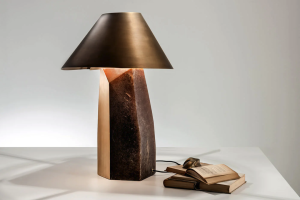Introduction
Cubic iron pyrite, commonly known as fool’s gold, is a mineral that sparkles like gold and has fascinated people for centuries. From ancient civilizations to modern times, this lustrous mineral has been used for jewelry, decorative objects, and even in industrial applications. In this article, we will explore the history, geology, properties, and uses of cubic iron pyrite.
History
The history of cubic iron pyrite dates back to ancient times when it was used for currency, religious objects, and ornamental purposes. The Greeks and Romans used it in jewelry, while the Incas used it for religious objects. Its name comes from the Greek words “pyr” and “ite,” meaning “fire” and “stone,” respectively. The name refers to the sparks of light that are produced when the mineral is struck against a hard surface.
Geology
Cubic iron pyrite is a sulfide mineral that is made up of iron and sulfur. It occurs in a variety of rock types, including sedimentary, metamorphic, and igneous rocks. The most common form of cubic iron pyrite is found in sedimentary rocks where it forms in nodules, lenses, and veins. It can also be found in metamorphic rocks such as gneiss and schist, and in igneous rocks like granite and basalt.
Properties
Cubic iron pyrite has a metallic luster and a bright golden color that resembles gold. It has a hardness of 6-6.5 on the Mohs scale, which means it is harder than most other minerals but still easily scratched by a knife or metal. The specific gravity of cubic iron pyrite is around 4.95, which means it is relatively heavy for its size.
Uses
Cubic iron pyrite has been used for a variety of purposes throughout history. In ancient times, it was used for currency, jewelry, and religious objects. In modern times, it is used as a source of sulfur for the production of sulfuric acid and other industrial chemicals. It is also used in the production of steel and in the manufacture of electronic components.
Conclusion
In conclusion, cubic iron pyrite, also known as fool’s gold, is a mineral that has fascinated people for centuries. Its history, geology, properties, and uses have made it one of the most versatile minerals in the world. While it may not be as valuable as gold, cubic iron pyrite’s unique properties and glittering appearance make it a valuable mineral in its own right. Whether used for jewelry, industrial applications, or simply admired for its beauty, cubic iron pyrite continues to amaze and captivate people around the globe.



More Posts
Stunning Vintage Opaline Lights: Illuminating Homes with Timeless Elegance
Bringing Versatility to Light: Exploring the Benefits of Dual Light Technology
Shining Light on E14 Bulbs: The Ultimate Guide to Understanding and Using Them